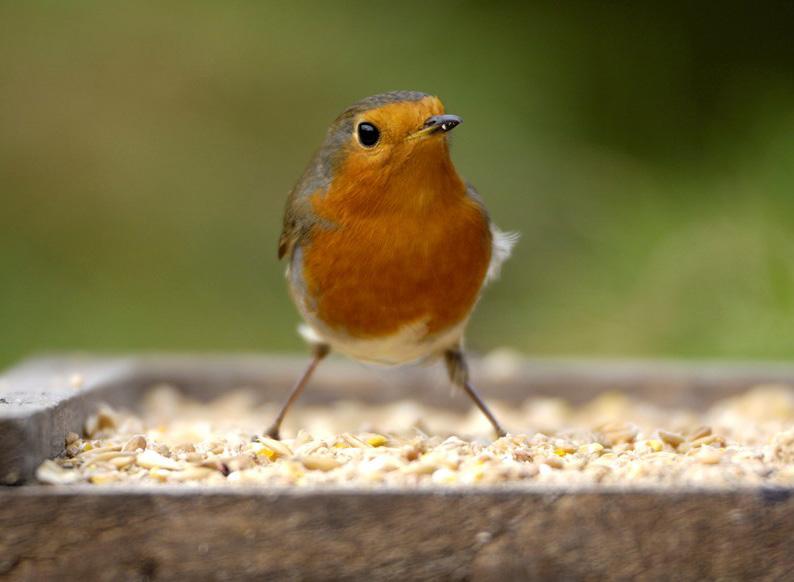
3 minute read
The Robin…Britain’s favourite bird
The Robin…Britain’s favourite bird

Advertisement
Robins are one of the commonest birds in Britain. They are a bird of woodland and glades, a habitat almost perfectly replicated by millions of gardens, of all shapes and sizes, the length and breadth of the country. It follows then that we are very familiar with them. On the continent however the relationship between man and robin is very different and British birdwatchers on foreign trips are surprised by how hard they are to find, confined normally to woods and hedgerows.
Here, of course, they adorn countless Christmas cards every year. Why robins? Well, the answer is in the colour of every Royal Mail van. Red. In Victorian times the uniform of postal workers was red and they had the nick-name ‘robins’. They, of course, delivered Christmas cards and a few clever artists started putting a real robin on a card, some even carrying an envelope in its beak. This association with Christmas was clearly popular and it has stuck to the present day. Strangely, a card usually depicts a robin in a setting of thick snow, which for the robin would be decidedly harsh but cute to look at for us!
It was thought for decades that robins belonged to the thrush family. Modern DNA analysis has proven this wrong and now they are placed in the family of Old World Flycatchers. From a birdwatcher’s point of view this is much posher as most of us would far sooner see a type of flycatcher than a thrush!
Weirdly though, the name robin red-breast persists but the breast isn’t red at all, (except on the worst Christmas cards), it’s orange. It’s that colour for a reason too. Not for wooing a female, as she has the same colour breast, but for threatening others. Robins are highly territorial and it will defend it’s breeding territory from about February. In winter it defends a much smaller area.

They sing different songs in spring, summer and winter. The winter one is particularly weak and almost mournful and as soon as it is heard you know the season is changing. They also sing at night in areas with street lights. This gives rise to the many erroneous claims of hearing a nightingale, just because it is dark. This singing
is a way to mark their territorial boundaries. Woe betide a rival robin who enters as any illusion that they are a ‘bird of peace’, such as on the Christmas card, is quickly dispelled in the mayhem of fighting that will ensue. In winter a rival doesn’t just mean another male. Females are unwanted too, as the winter territory is defended as a food resource for that single bird and no other.
Come spring of course and the mechanics of mating require there to be another bird of the opposite sex around and this is the only time when that happens. The sites chosen by robins for their nest are many. A shelf in a garden shed, inside a pile of old tyres, inside a greenhouse that has a broken pane of glass or a hole in a stone wall, even wood piles. Anywhere that offers a dry, safe nest. Tragically, many in suburban areas fall prey to cats and magpies can be seen actively searching bushes in a garden, looking for unguarded robin and blackbird nests.
Young robins just out of the nest have no orange on them. If they did they would be driven away. They are small dumpy little birds with a heavily speckled chest. Robins have a clever way of limiting losses of babies at this most vulnerable stage. They spread them out, one under this bush, another over there, another behind that bush and so on. In this way, if a predator finds and takes one, it hasn’t found them all. People become concerned if they find a baby robin seemingly ‘abandoned’. It isn’t, it’s been hidden on its own for a reason and needs to be left where it is. Mum and Dad know it’s exact location and will bring food to it and all the others until they are independent.
Roger Hooper, Cornwall RSPB Local Group
Images: Courtesy of RSPB-images




